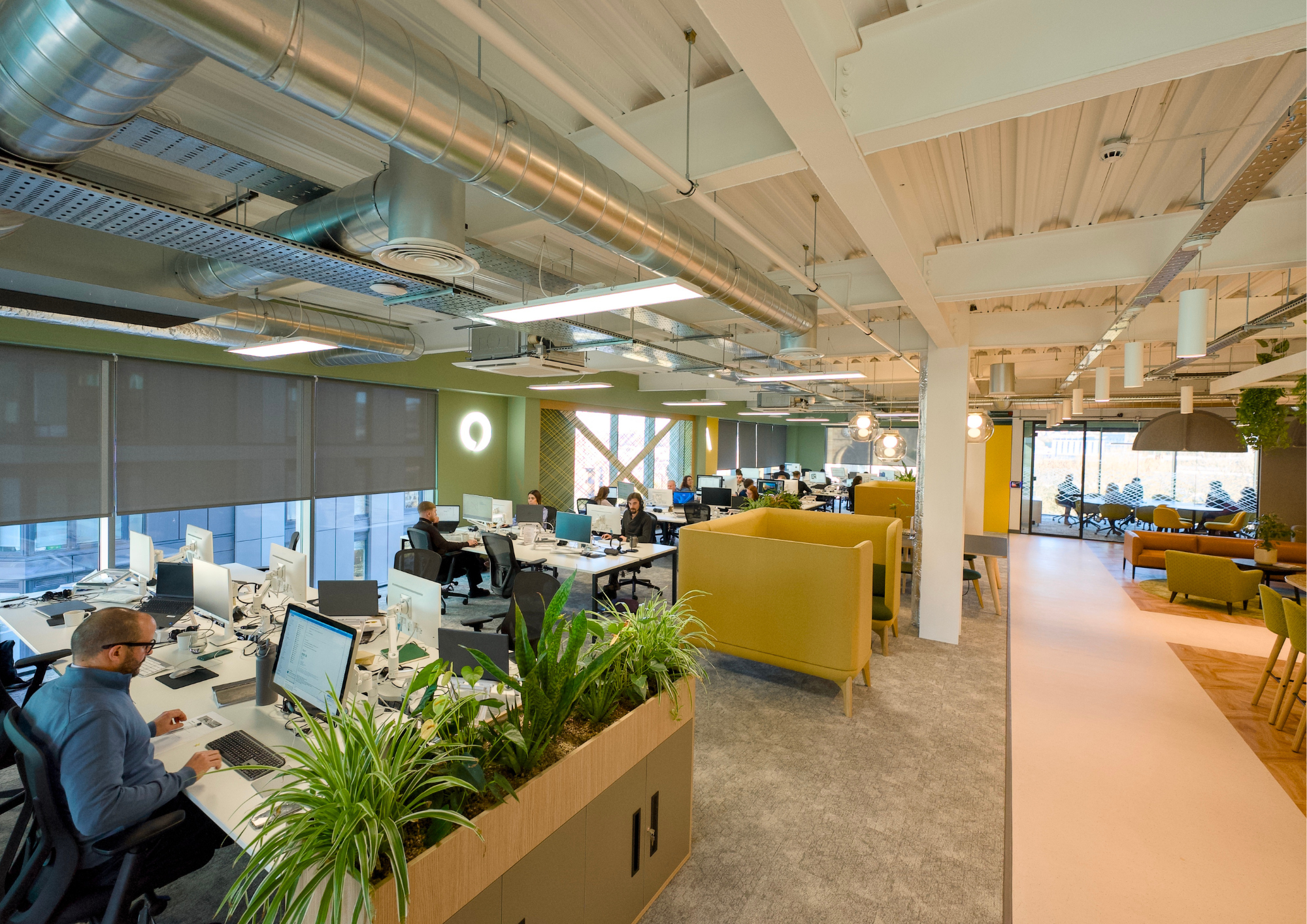Designing a new office is never just about desks, finishes, or square footage. It’s about behaviour.
Every decision about layout, lighting, and flow shapes how people think, feel, and interact. The science of human behaviour gives us the tools to design spaces that don’t just look impressive but genuinely improve culture, wellbeing, and performance.
At Formm, these are three behavioural effects we pay attention to on every fit-out.
1. The arrival effect: first impressions anchor experience
Behavioural science shows that first impressions carry disproportionate weight. Psychologists call this the Primacy Effect. Once formed, these impressions shape how people interpret everything else that follows. Research also highlights “thin slicing”, our ability to make snap judgements about trust and competence within seconds.
This makes your arrival space a silent but powerful communicator of your values. Reception isn’t just a waiting room; it sets the emotional tone for clients, visitors, and employees alike.
At BHP’s Sheffield office, we worked closely with the client to design a professional and intuitive arrival space, which resulted in clients feeling reassured, and employees were proud to bring people in.
Takeaway for business owners: The design of your arrival space directly influences confidence, trust, and employee pride. Ignore it, and you risk undermining every interaction that follows.
2. The social effect: space as a framework for collaboration
Environments are powerful “choice frameworks.” In behavioural science, this is called Choice Architecture, the idea that layout influences behaviour without people even noticing.
•Variety matters: open areas, quiet pods, and breakout spaces act like a menu of work settings. Giving employees choice fosters motivation, autonomy, and engagement.
•Proximity drives interaction: even small tweaks, positioning a breakout zone centrally, or clustering teams more closely, can increase spontaneous collaboration and strengthen social bonds.
•Balance is key: too open and distractions soar. Too closed and knowledge-sharing dies.
At Counter Context’s offices in New Era Square, we applied this thinking by creating a mix of pods, collaborative zones, and centralised breakout areas. The design gave employees autonomy over their work while encouraging organic collaboration.
Takeaway for business owners: The right mix of spaces doesn’t just look good. It empowers people, protects focus, and drives collaboration.
3. The well-being effect: comfort as a driver of performance
Cognitive science makes it clear: discomfort isn’t neutral; it actively undermines performance.
•Decision fatigue: poor lighting, noise, or ergonomics accelerate mental exhaustion, leaving fewer resources for complex work.
•Cognitive load: suboptimal acoustics or air quality increase the brain’s background effort, reducing capacity for creativity and problem-solving.
•Biophilia hypothesis: humans are wired to prefer natural light, greenery, and organic textures. Studies show these features reduce stress, improve mood, and boost focus.
When we delivered Turner & Townsend’s Sheffield office in Elshaw House, one of the UK’s most sustainable workplaces, we applied these insights by weaving biophilic design and sustainable finishes into the fit-out. The space now actively supports focus, well-being, and retention.
Takeaway for business owners: Wellbeing isn’t a perk. It’s a cost-saving design strategy that reduces absenteeism, improves retention, and boosts long-term productivity.
Why it matters
The behavioural lens gives office design a new level of precision. It’s not just about how a space looks, but how it works for the people inside it.
When you design with behaviour in mind, you:
•Build culture into the fabric of the workplace.
•Enable collaboration and protect focus.
•Boost productivity while supporting wellbeing.
•Create offices that attract clients and talent alike.
We always start with the same question:
“How will people behave in this space?”
